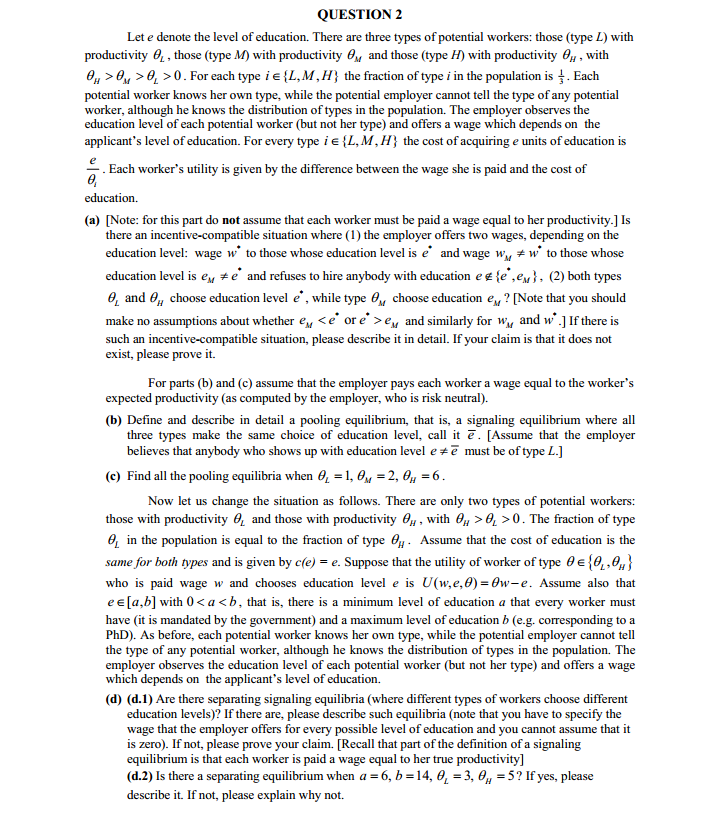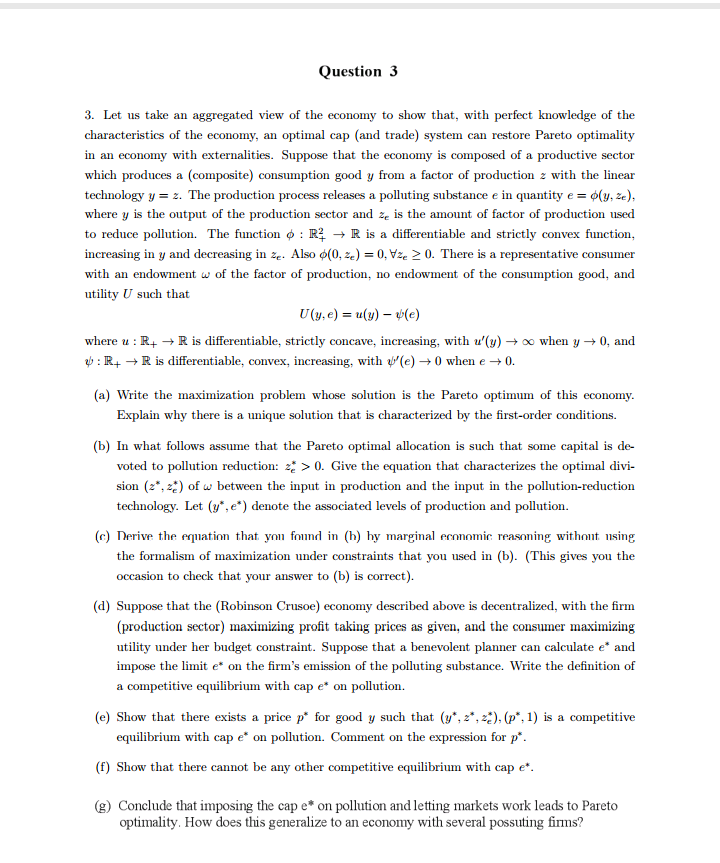


TThe following are the questions
QUEETIDN ti. Players 1 and 2 have agreed to play tennis tomorrow. Hoytrever1 this 1will be possible only if at least one of them shows up early to claim the court. Each player is either a morning person or a night person. Each player knows his own type1 and, regardless of his own type, assigns probability % to the other player being a morning person. Each player chooses between showing up early (E) to claim the court or showing up late {L}; the choices are made independently and simultaneously. The basic payoffs are as follows: (1} if either player shows up early. then playing is pomible. and each player receives a payoff of 4. [2} if both show up late1 then they will not be able to play and each player receives a payoff of [it in addition to those payoffs, a morning person who shows up early also receives an extra payoff of l. whereas a night person 1who shows up early suifers a payoff penalty of 3. Thus. for example1 if they are both night persons and Player l shows up early. while Player 2 shows up late then Player l's payoff is 43 = l and Player 2's payoff is 4. All these payoffs are von Nemmm-Morgenstem parsf'fs {a} Describe this situation using states and information partitions. With every state associate the relevant game. {h} Find the common prior. {c} Use the Harsanyi transformation to convert the representation of part (a) into an extensive- fonn game. {:1} (ii) How many pure strategies does Player 2 have?I {til} Write down one possible mixed sn'ategy for Player l1 which is not a pure snategy. {:13} Write down one possible behavior strategy for Player 1. {c} Find a weak sequential equilibrium of the game of Part {c} and prove that there are no other (pure- or mixed-strategy} weak sequentiai equilibria. {f} Prove that the weak sequential equilibrium found in Part (e) is also a sequential equilibrium. QUESTION 2 Let e denote the level of education. There are three types of potential workers: those (type _) with productivity @, , those (type M) with productivity , and those (type #) with productivity ey , with OH > 0, > 0, >0. For each type i { L, M, H; the fraction of type i in the population is } . Each potential worker knows her own type, while the potential employer cannot tell the type of any potential worker, although he knows the distribution of types in the population. The employer observes the education level of each potential worker (but not her type) and offers a wage which depends on the applicant's level of education. For every type ic {L, M, H) the cost of acquiring e units of education is . Each worker's utility is given by the difference between the wage she is paid and the cost of education. (a) [Note: for this part do not assume that each worker must be paid a wage equal to her productivity.] Is there an incentive-compatible situation where (1) the employer offers two wages, depending on the education level: wage w to those whose education level is e and wage wy # w to those whose education level is ey # e and refuses to hire anybody with education egle ,ey}, (2) both types 0, and ey choose education level e , while type , choose education ey ? [Note that you should make no assumptions about whether ey,
ey and similarly for wy and w .] If there is such an incentive-compatible situation, please describe it in detail. If your claim is that it does not exist, please prove it. For parts (b) and (c) assume that the employer pays each worker a wage equal to the worker's expected productivity (as computed by the employer, who is risk neutral). (b) Define and describe in detail a pooling equilibrium, that is, a signaling equilibrium where all three types make the same choice of education level, call it 2. [Assume that the employer believes that anybody who shows up with education level ex e must be of type L.] (c) Find all the pooling equilibria when 0, =1, OM =2, 0g =6. Now let us change the situation as follows. There are only two types of potential workers: those with productivity , and those with productivity Oy , with Oy > 0, > 0. The fraction of type Or in the population is equal to the fraction of type By . Assume that the cost of education is the same for both types and is given by c(e) = e. Suppose that the utility of worker of type de (0, , , } who is paid wage w and chooses education level e is U(w,e, 0) =0w-e. Assume also that ee[a,b] with 0 0. Give the equation that characterizes the optimal divi- sion (2", 2.) of w between the input in production and the input in the pollution-reduction technology. Let (y", e*) denote the associated levels of production and pollution. (c) Derive the equation that you found in (b) by marginal economic reasoning without using the formalism of maximization under constraints that you used in (b). (This gives you the occasion to check that your answer to (b) is correct). (d) Suppose that the (Robinson Crusoe) economy described above is decentralized, with the firm (production sector) maximizing profit taking prices as given, and the consumer maximizing utility under her budget constraint. Suppose that a benevolent planner can calculate e* and impose the limit e* on the firm's emission of the polluting substance. Write the definition of a competitive equilibrium with cap e* on pollution. (e) Show that there exists a price p" for good y such that (y*, 2", 2:), (p*, 1) is a competitive equilibrium with cap e" on pollution. Comment on the expression for p". (f) Show that there cannot be any other competitive equilibrium with cap e*. (@) Conclude that imposing the cap e* on pollution and letting markets work leads to Pareto optimality. How does this generalize to an economy with several possuting firms












